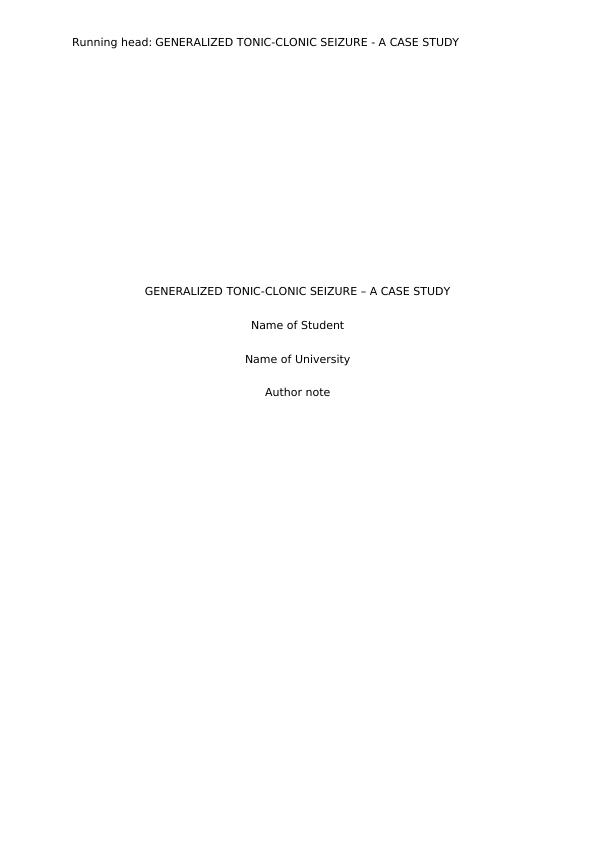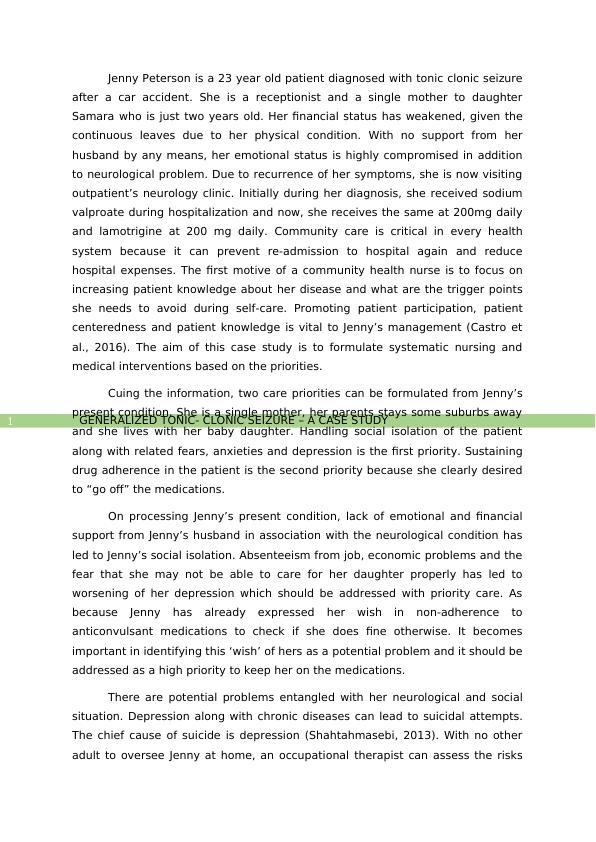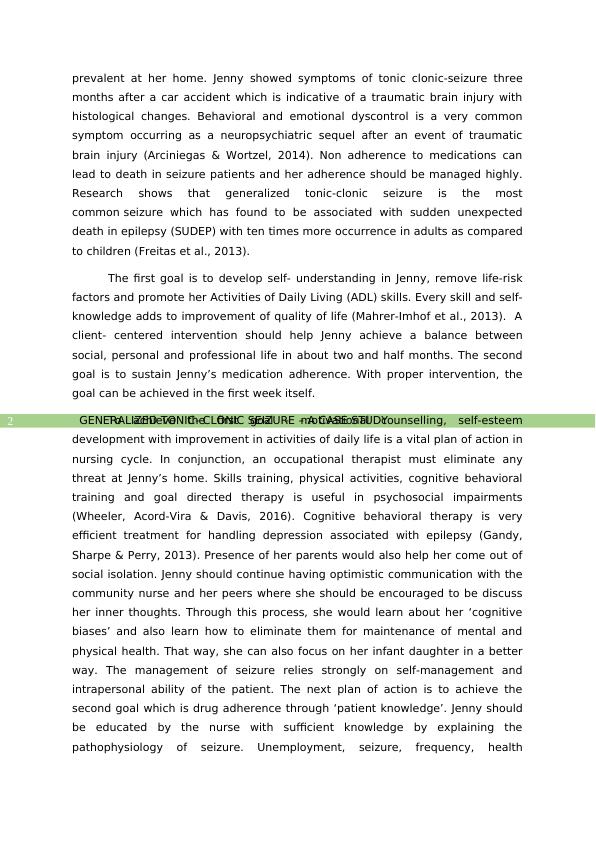Generalized Tonic-Clonic Seizure - A Case Study
Demonstrate the integration of principles in managing care of patients with chronic conditions by identifying and discussing two priorities of care and applying the clinical reasoning cycle for justification.
7 Pages2242 Words35 Views
Added on 2023-01-11
About This Document
This case study focuses on a 23-year-old patient diagnosed with generalized tonic-clonic seizure after a car accident. The study discusses the patient's social isolation, lack of emotional and financial support, and non-adherence to medications. It also explores the goals of developing self-understanding and sustaining medication adherence, along with the importance of a multidisciplinary approach in managing the patient's condition.
Generalized Tonic-Clonic Seizure - A Case Study
Demonstrate the integration of principles in managing care of patients with chronic conditions by identifying and discussing two priorities of care and applying the clinical reasoning cycle for justification.
Added on 2023-01-11
ShareRelated Documents
End of preview
Want to access all the pages? Upload your documents or become a member.
Assessment of Patient Jenny Peterson: Maintaining a Safe Environment and Deficient Knowledge on Seizure Management
|6
|2184
|439
The Role of a Primary Health Care Nurse in Managing Epilepsy: A Case Study
|6
|2274
|76
Nursing Priorities in Chronic Disease
|7
|2523
|286
Managing Epilepsy: A Case Study of Jenny Peterson
|9
|2433
|338
Case Study Analysis: Jenny Peterson
|7
|2201
|112
Simulated Mental Health Client Care Setting - Assessment
|18
|4264
|339



